11 Underground Homes & Why Subterranean Houses Are Up Next
Author: Rick Worst | Editor: Omar Alonso
Review & Research: Jen Worst & Chris Miller
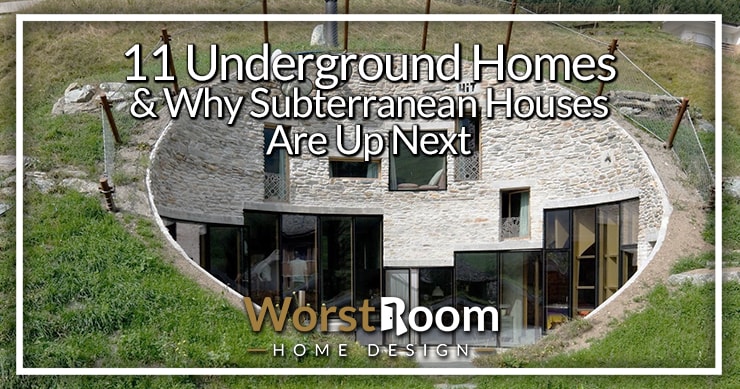
Underground homes are growing in popularity for a lot of reasons. They're environmentally conscious living solutions that are also cost effective. And they're cool to look at.
Land is a limited natural resource and the earth’s population keeps on increasing. Underground homes just might be the solution to combat this issue of space, as opposed to building upwards.
11 Underground Homes (& Reasons They're the Future)
Here are 10 reasons (and 11 houses) why you can rest easy when buying or constructing an underground home, plus ten awesome underground houses that illustrate these reasons perfectly.
1) Underground Homes Exists in Harmony with Nature
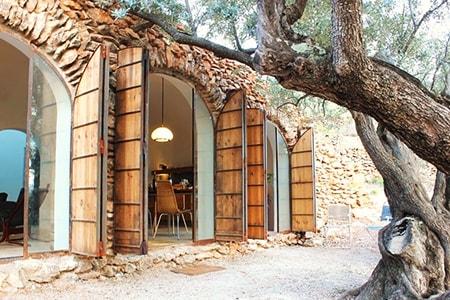
Underground homes are constructed in such a way that they are minimally invasive to the natural ecosystem of the region. The indigenous flora and fauna are not disturbed by glaring concrete structures as these homes blend harmoniously into the landscape.
You can grow food on the land above your homes and set up solar panels above ground for your energy needs. And since you aren’t paving the land with concrete it leaves more surface area for the groundwater to filter into the earth and replenish the water table.
2) Underground Houses are Energy-Efficient Living Solutions
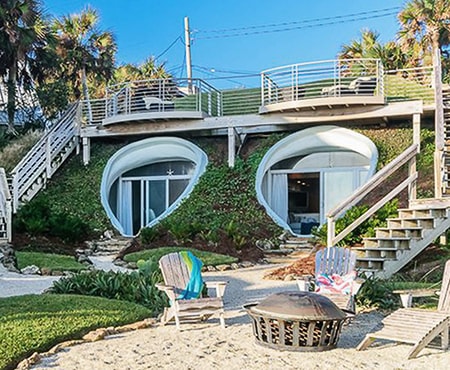
Underground homes are a sustainable and environmentally-friendly housing option. The most important factor that makes these underground homes energy efficient is the stability of room temperature. The earth itself is responsible for this stabilizing effect.
The temperature of the earth doesn’t vary as much as the temperature of the air outside. This ensures that even though the climate outside fluctuates between extremes the conditions inside the subterranean homes remain more or less stable.
Therefore, you will have to spend much less money on heating and cooling an underground home located in a region with an extreme climate than on a conventional home in the same location. You only need to invest in proper ventilation and insulation at the time of construction in order to cut down on the consumption of power.
There is ample space above the homes so most underground homes can set up solar panels above the ground. Reducing dependence on non-renewable sources of energy is another way to live in harmony with nature.
3) Houses Built Underground are Resilient Structures
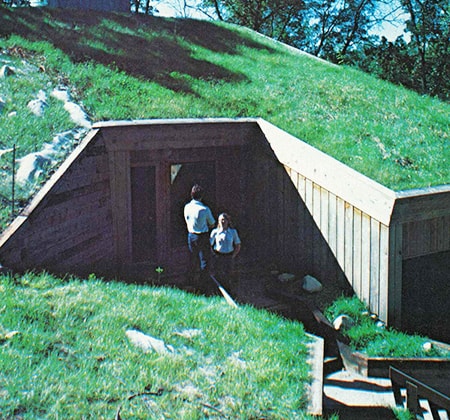
The US Department of Energy (DoE) has stated that underground homes are a lot more resilient to the ravages of nature than conventional homes. The DoE says that these homes offer protection from high winds, hailstorms, tornadoes, hurricanes and even earthquakes.
Apart from protecting you from the ravages of Mother Nature, underground houses also stand strong in the face of man-made disasters. They can protect you from explosions and nuclear accidents.
Burglaries are also less frequent as these dwellings blend into the landscape and are, therefore, hard to spot. Since these homes are mostly constructed from concrete there are lower risks of fire as well. There aren't a ton of entrances, exits, and windows either so no matter what types of rooms in the house you have, you can not worry about them attracting the wrong people.
4) Subterranean Homes Have Low Maintenance Costs
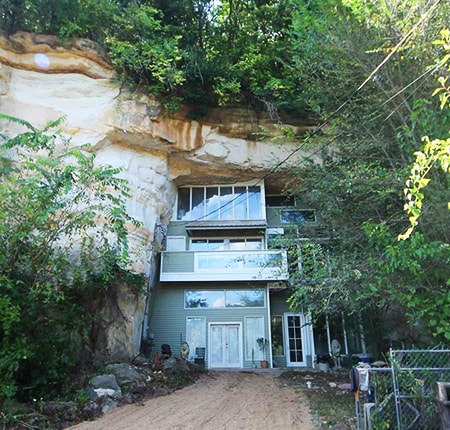
You might have to spend more money on the initial construction, but these houses built underground are easier on your pockets in the long run, even if they're massive types of mansions like the one pictured above.
There are fewer walls to be painted and no types of gutters to be cleaned. So you end up saving a lot of money spent on maintenance and keeping up appearances.
Since these homes are naturally resilient to a lot of natural as well as manmade disasters insurance companies also charge lower premiums on home insurance.
The cherry on top of the cake is that these houses have pretty much stable temperatures in comparison to above-ground dwellings. This considerably brings down heating and cooling costs.
Although the initial investment might be 20 to 30 percent higher than constructing a conventional home, the long-term benefits are worth the expense.
5) Houses Built Underground Offer Built-in Privacy
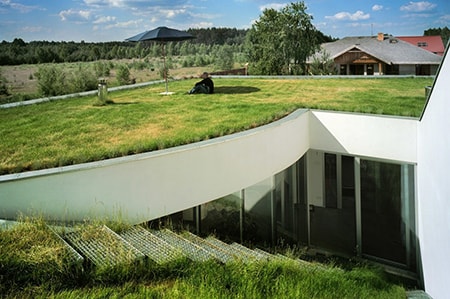
There are two major types of underground homes—earth-sheltered homes and earth-bermed homes.
Earth-sheltered homes are built completely below the ground—the walls and the roof are covered by earth. Earth-bermed dwellings are built partially below the ground with at least one wall exposed for lighting and ventilation.
The covering of earth—whether complete or partial—has natural soundproofing qualities. Choosing an underground house will be peaceful and calming even if you live in a noisy region because the earth absorbs all the noise pollution.
Moreover, since these structures are either completely or partially hidden away under the ground, it offers seclusion and privacy. In an increasingly crowded world, having a private and secluded spot to spend time in sounds like heaven!
6) Build Within the Right Soil Composition
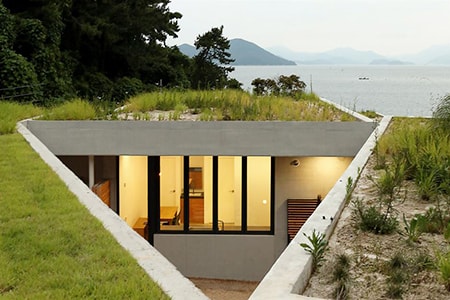
The composition of the soil is quite crucial to the strength of your subterranean house. Ideally, these homes should be built in regions with granular soil. Granular soil—like sand and gravel—bears more weight, is easily permeable and drains quickly.
Regions having clayey soil and permafrost are not ideal. They are cohesive varieties of soil that expand when wet and retain a lot of water.
You should always choose regions with granular soil, especially if you are building an earth-sheltered home that is going to be completely covered by soil.
Another thing that you should test before building an underground home is soil radon levels. When the uranium in the soil decays it produces radon. Long-term exposure to this radioactive substance can affect your health.
So always conduct a soil test to find out the composition of your soil before you start construction.
7) Choose Durable Construction Materials
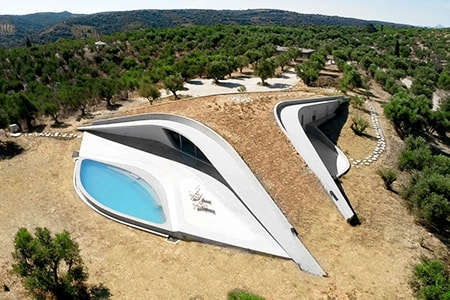
Since these dwellings will be covered by earth either partially or completely, they should be constructed using durable materials that can withstand sustained exposure to natural elements.
This means that you should choose construction materials that have good waterproofing and insulation capabilities.
Concrete and concrete alternatives are the most commonly used material for the construction of underground homes. It is a strong, durable and fire-resistant material. It is more cost effective to use concrete masonry units (types of concrete blocks) instead of cast-in-place concrete.
Steel is also used to provide structural stability. But wood is only used for interiors as they are not resilient enough to be used as structural components.
8) Choose the Underground Home Site Carefully
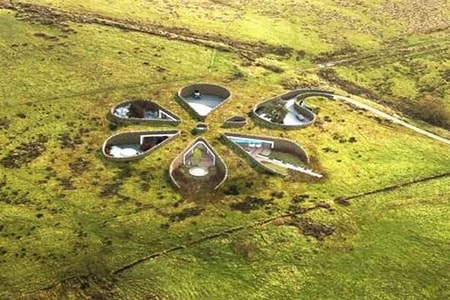
Where you choose to build your underground home can affect both your construction as well as maintenance costs.
The temperature of the earth remains relatively stable and does not vary as much as atmospheric temperature. So, these homes do well in regions with significantly extreme temperatures that have low humidity. The Rocky Mountains and the Great Plains are ideal locations to build your underground home.
The topography of the region also affects the construction. You will have to excavate the earth no matter where you build these kinds of homes. You will only have to excavate very little on steeper slopes. On the other hand, digging out flat sites requires more time, effort and money.
Taking all these into consideration, the ideal location for building an underground home would be a south-facing steep slope, in a region with moderate or long winters. Choosing locations that require minimal man-made structural changes can significantly lower your costs.
9) Plan the Drainage Around Your Underground House
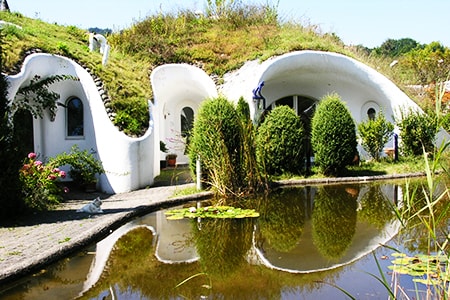
Moisture retention can be the worst enemy of your underground home. When choosing the location of your future subterranean home make sure to plan the drainage properly.
Checking groundwater levels and soil composition will help you figure out the ideal drainage solutions.
Choose a site where the natural drainage flows away from the walls of your home. If the soil does not drain quickly or if the water flow is towards your walls it can build up a lot of water pressure on the walls.
One solution to this problem is to install drainage systems that draw the water away from your house. However, natural water drainage is always a better and cost-effective choice.
10) Invest in Top-Tier Insulation & Ventilation
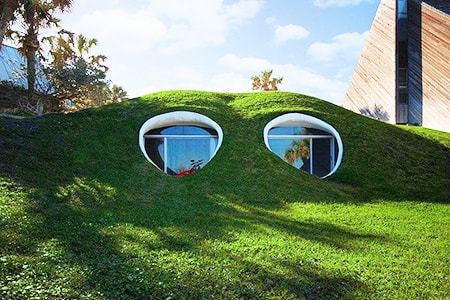
One of the most common problems that you might face if you don’t take adequate precautionary steps is moisture retention. While building an underground home has a lot of advantages, they can become damp and musty like basements if you don’t provide proper ventilation and insulation.
The temperature inside your home will always be lower than the temperature outside. Much like how a glass of ice water will have condensation on its surface due to the temperature variations inside and outside the glass, the walls of your home are also susceptible to condensation if you don’t insulate them properly.
While the condensation will not cause water to leak into your homes, your walls will retain the moisture and develop mildew. Proper insulation will ensure that the temperature of your home matches the temperature outside. This will combat moisture retention, dampness and mildew.
Proper types of chimneys and other ventilation is also of utmost importance. The buildup of combustion fumes and other harmful gases can cause health problems.
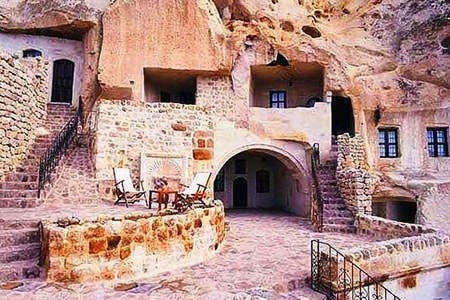
Underground Homes are Incredible!
Earlier, underground housing was merely considered a novelty to be indulged in on exotic vacations. But now more and more people are beginning to see the environmental as well as the economical benefits of living in an underground home.
These houses are low maintenance and exist in harmony with its natural environment. Moreover, they also offer protection from natural and manmade disasters.
Although these houses are sustainable and budget-friendly there are some disadvantages to owning a home built underground. It's difficult to get mortgages for one of these and reselling these homes might also prove to become a hurdle.
But the benefits far outweigh these minor inconveniences. So if you are looking for an unconventional and environmentally conscious housing option, definitely check out underground homes.



